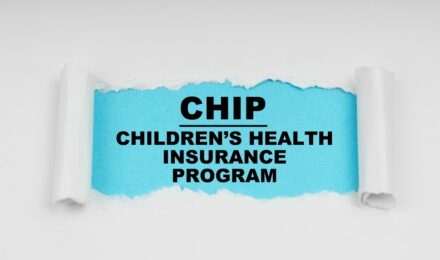Contents
Graduate and professional education has long been a cornerstone of the American higher education system. Degrees in medicine, law, business, and advanced research not only carry prestige but also open doors to high-paying careers and leadership roles. Yet these programs are also among the most expensive, often requiring students to borrow six figures to complete their education.
In 2025, sweeping federal loan reforms are changing the financing landscape for graduate and professional students. With the elimination of Grad PLUS loans and the introduction of new aggregate borrowing caps, graduate students face unprecedented challenges in covering the cost of advanced degrees. These changes are expected to reshape enrollment patterns, access, and even the structure of graduate education itself.
The Cost of Graduate Education
Graduate and professional degrees come with substantial price tags. Tuition for medical school often exceeds $60,000 per year, while law schools and MBA programs can cost nearly as much. Living expenses, fees, and materials add thousands more annually. As a result, graduate students frequently rely on federal loans to finance their studies.
Under the previous system, Grad PLUS loans allowed students to borrow up to the full cost of attendance, covering any gap left by Stafford loans. This flexibility made graduate education accessible to many but also left borrowers with daunting debt loads. Critics argued that the availability of nearly unlimited credit encouraged institutions to raise tuition with little restraint.
The End of Grad PLUS
The 2025 budget reforms eliminated Grad PLUS loans, replacing them with a revised unsubsidized Stafford loan system for graduate students. The new program includes strict annual and lifetime borrowing limits, far below the open-ended structure of Grad PLUS.
For graduate students, this means federal borrowing alone may no longer be sufficient to cover the full cost of attendance. While the intent is to curb overborrowing and rein in tuition inflation, the practical effect is to push students toward private loans and alternative financing models.
Aggregate Borrowing Caps
The reforms also introduced a lifetime borrowing cap of roughly $257,500 across all federal student loans (excluding Parent PLUS). For students pursuing multiple degrees or high-cost professional programs, this cap could quickly become a binding constraint. Medical students, for example, often graduate with debt well above this threshold. Under the new system, they may be forced to seek private credit once they hit the federal limit.
This cap raises difficult questions about access. Students from wealthy backgrounds can rely on family support or personal resources, while those from less affluent families may face barriers to entering high-cost professional fields.
Implications for Medical, Law, and Business Schools
The reforms are likely to hit certain programs harder than others.
- Medical education: With average debt levels exceeding $200,000, medical students are among the most vulnerable to borrowing caps. Without sufficient federal credit, aspiring doctors may struggle to finance their education, potentially worsening physician shortages in underserved areas.
- Law schools: The legal field has long grappled with oversupply in some areas and extreme demand in others. Reduced access to federal loans may push students to reconsider whether the investment is worth the risk, especially outside of top-tier schools.
- MBA programs: Business schools may face enrollment declines if students perceive that the return on investment no longer justifies the cost. International students, who often rely less on U.S. federal loans, could become a larger share of the applicant pool.
These dynamics could reshape the professional education market, favoring elite institutions with strong endowments while putting pressure on less selective programs to reduce costs or offer institutional aid.
Private Lending and Alternative Models
As federal credit becomes more constrained, private lenders are expected to fill part of the gap. While private loans can provide needed funds, they often come with higher interest rates, stricter underwriting, and fewer borrower protections than federal loans. This raises concerns about long-term repayment burdens and financial vulnerability.
Some institutions may also expand the use of income-share agreements (ISAs), where students agree to pay a percentage of future income for a set period instead of taking traditional loans. Others may turn to employer partnerships or tuition remission programs to attract students. While innovative, these alternatives carry risks and may not be accessible to all students.
Equity and Access Concerns
The new borrowing limits threaten to widen inequality in graduate education. Students from lower-income backgrounds or underrepresented groups may find it harder to pursue professional degrees without reliable federal financing. Meanwhile, wealthier students will retain access to resources that allow them to enroll despite rising costs.
This could have downstream effects on workforce diversity. Fields like medicine, law, and academia benefit from diverse perspectives, but if financial barriers grow, the pipeline of underrepresented professionals may shrink. Advocates are already calling for supplemental grant programs, service-based scholarships, and targeted state support to preserve access.
Institutional Adaptations
Graduate and professional schools are not standing still. Some are reevaluating tuition pricing strategies, exploring accelerated programs, or offering expanded scholarships to remain competitive. Others are lobbying for exemptions or adjustments to borrowing caps for specific fields, particularly medicine, where workforce needs are acute.
The next several years may bring significant experimentation in program design. Hybrid models, online education, and shorter degree pathways could become more common as institutions seek to balance quality with affordability.
The Bigger Picture
The reforms to graduate lending reflect a broader shift in U.S. higher education policy. Lawmakers are signaling that unlimited federal credit is no longer sustainable and that institutions must take greater responsibility for controlling costs. While this may curb excessive borrowing, it risks creating barriers to advanced education unless paired with stronger grant aid or targeted subsidies.
For professional fields critical to public health, justice, and economic leadership, the stakes are high. Policymakers will need to weigh the benefits of fiscal restraint against the long-term costs of restricting access to graduate education.
Conclusion
Graduate and professional education in the United States is entering a period of strain. With the elimination of Grad PLUS loans and the introduction of aggregate borrowing caps, students face new challenges in financing advanced degrees. These changes may protect families from overwhelming debt but also risk limiting access to critical professions.
The coming years will test whether institutions can adapt with innovation and affordability—or whether barriers to graduate education will deepen existing inequalities. For students considering advanced degrees, careful planning and exploration of alternative financing will be essential in navigating this new environment.
References
- U.S. Department of Education – Federal Student Aid Updates
- The College Investor – Graduate Loan Changes
- Brookings Institution – Graduate Education and Student Debt
Contents
Graduate and professional education has long been a cornerstone of the American higher education system. Degrees in medicine, law, business, and advanced research not only carry prestige but also open doors to high-paying careers and leadership roles. Yet these programs are also among the most expensive, often requiring students to borrow six figures to complete their education.
In 2025, sweeping federal loan reforms are changing the financing landscape for graduate and professional students. With the elimination of Grad PLUS loans and the introduction of new aggregate borrowing caps, graduate students face unprecedented challenges in covering the cost of advanced degrees. These changes are expected to reshape enrollment patterns, access, and even the structure of graduate education itself.
The Cost of Graduate Education
Graduate and professional degrees come with substantial price tags. Tuition for medical school often exceeds $60,000 per year, while law schools and MBA programs can cost nearly as much. Living expenses, fees, and materials add thousands more annually. As a result, graduate students frequently rely on federal loans to finance their studies.
Under the previous system, Grad PLUS loans allowed students to borrow up to the full cost of attendance, covering any gap left by Stafford loans. This flexibility made graduate education accessible to many but also left borrowers with daunting debt loads. Critics argued that the availability of nearly unlimited credit encouraged institutions to raise tuition with little restraint.
The End of Grad PLUS
The 2025 budget reforms eliminated Grad PLUS loans, replacing them with a revised unsubsidized Stafford loan system for graduate students. The new program includes strict annual and lifetime borrowing limits, far below the open-ended structure of Grad PLUS.
For graduate students, this means federal borrowing alone may no longer be sufficient to cover the full cost of attendance. While the intent is to curb overborrowing and rein in tuition inflation, the practical effect is to push students toward private loans and alternative financing models.
Aggregate Borrowing Caps
The reforms also introduced a lifetime borrowing cap of roughly $257,500 across all federal student loans (excluding Parent PLUS). For students pursuing multiple degrees or high-cost professional programs, this cap could quickly become a binding constraint. Medical students, for example, often graduate with debt well above this threshold. Under the new system, they may be forced to seek private credit once they hit the federal limit.
This cap raises difficult questions about access. Students from wealthy backgrounds can rely on family support or personal resources, while those from less affluent families may face barriers to entering high-cost professional fields.
Implications for Medical, Law, and Business Schools
The reforms are likely to hit certain programs harder than others.
- Medical education: With average debt levels exceeding $200,000, medical students are among the most vulnerable to borrowing caps. Without sufficient federal credit, aspiring doctors may struggle to finance their education, potentially worsening physician shortages in underserved areas.
- Law schools: The legal field has long grappled with oversupply in some areas and extreme demand in others. Reduced access to federal loans may push students to reconsider whether the investment is worth the risk, especially outside of top-tier schools.
- MBA programs: Business schools may face enrollment declines if students perceive that the return on investment no longer justifies the cost. International students, who often rely less on U.S. federal loans, could become a larger share of the applicant pool.
These dynamics could reshape the professional education market, favoring elite institutions with strong endowments while putting pressure on less selective programs to reduce costs or offer institutional aid.
Private Lending and Alternative Models
As federal credit becomes more constrained, private lenders are expected to fill part of the gap. While private loans can provide needed funds, they often come with higher interest rates, stricter underwriting, and fewer borrower protections than federal loans. This raises concerns about long-term repayment burdens and financial vulnerability.
Some institutions may also expand the use of income-share agreements (ISAs), where students agree to pay a percentage of future income for a set period instead of taking traditional loans. Others may turn to employer partnerships or tuition remission programs to attract students. While innovative, these alternatives carry risks and may not be accessible to all students.
Equity and Access Concerns
The new borrowing limits threaten to widen inequality in graduate education. Students from lower-income backgrounds or underrepresented groups may find it harder to pursue professional degrees without reliable federal financing. Meanwhile, wealthier students will retain access to resources that allow them to enroll despite rising costs.
This could have downstream effects on workforce diversity. Fields like medicine, law, and academia benefit from diverse perspectives, but if financial barriers grow, the pipeline of underrepresented professionals may shrink. Advocates are already calling for supplemental grant programs, service-based scholarships, and targeted state support to preserve access.
Institutional Adaptations
Graduate and professional schools are not standing still. Some are reevaluating tuition pricing strategies, exploring accelerated programs, or offering expanded scholarships to remain competitive. Others are lobbying for exemptions or adjustments to borrowing caps for specific fields, particularly medicine, where workforce needs are acute.
The next several years may bring significant experimentation in program design. Hybrid models, online education, and shorter degree pathways could become more common as institutions seek to balance quality with affordability.
The Bigger Picture
The reforms to graduate lending reflect a broader shift in U.S. higher education policy. Lawmakers are signaling that unlimited federal credit is no longer sustainable and that institutions must take greater responsibility for controlling costs. While this may curb excessive borrowing, it risks creating barriers to advanced education unless paired with stronger grant aid or targeted subsidies.
For professional fields critical to public health, justice, and economic leadership, the stakes are high. Policymakers will need to weigh the benefits of fiscal restraint against the long-term costs of restricting access to graduate education.
Conclusion
Graduate and professional education in the United States is entering a period of strain. With the elimination of Grad PLUS loans and the introduction of aggregate borrowing caps, students face new challenges in financing advanced degrees. These changes may protect families from overwhelming debt but also risk limiting access to critical professions.
The coming years will test whether institutions can adapt with innovation and affordability—or whether barriers to graduate education will deepen existing inequalities. For students considering advanced degrees, careful planning and exploration of alternative financing will be essential in navigating this new environment.






